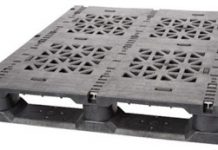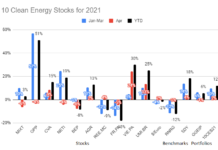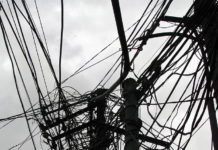This article is a continuation of my Ten Alternative Energy Speculations for 2008, with picks #8, 9, and10 published last Thursday. If you haven’t already, please read the introduction of that article before buying any of the stock picks that follow. These companies are likely to be highly volatile, and large positions are not appropriate for many investors. My least risky picks (#8,9, and #10) are part of that same article; my most speculative plays (#1-3) will are here.
#7 Electro Energy, Inc. (NasdaqCM:EEEI) $0.68
Electro Energy has risen 36% in the month and a half since I last wrote about it. But the reasons to own it are still strong, and the rising share price should actually help the company raise the money they need to ramp up production. See this article and the one linked to above for my reasons to like this stock.
More recently, EEEI briefly rose to over $1 because of some excitement generated by their participation in an electric vehicle symposium. My guess is that year end tax loss selling has brought the stock back down since then. If I’m right, we can expect it to rebound again the next time they get attention from the press. In any case, we can expect a lot of volatility.
#6 Capstone Microturbine (NasdaqGM:CPST) $1.62, and
#5 FuelCell Energy Inc. (NasdaqGM:FCEL) $10.30
I’m bullish on both these companies because I’m bullish on distributed generation and Combined Heat and Power (CHP) technologies. My intuition is that 2008 or 2009 will be the year that distributed generation and CHP grab the attention of Wall Street, the way thin-film PV stole the show in 2007. Both FuelCell and Capstone stand to benefit. They may even get a boost from making ethanol production more efficient.
Regular readers may be surprised that I am recommending a fuel cell stock, since I call Hydrogen Fuel Cell Vehicles "a politically inspired boondoggle." But there are more types of fuel cells than hydrogen: molten carbonate or solid oxide fuel cells. FCEL makes a variant of molten carbonate fuel cell, called the Direct Fuel Cell (DFC), a different beast than the hydrogen fuel cells, because it can work without an external mechanism to reform the hydrogen.
FuelCell’s DFCs burn methane rather than hydrogen, and are very tolerant not only of low heat content methane (which is often produced in anaerobic digestion or wastewater treatment.) Note that on page 10 of this EPA study [.pdf] of combined heat and power installations at wastewater treatment plants, a 300kW fuel cell requires a less expensive fuel treatment pressurization facility than a much smaller microturbine system. This is almost certainly due to the lower need for fuel pressurization.
Biogas can be a particularly tricky fuel given the presence of impurities such as H2S and siloxanes which build up as deposits in combustion chambers. Microturbines, fuel cells, and internal combustion engines need fuel treatment if siloxanes (which are usually present in waste water treatment plants as a byproduct of deodorants) are present. Fuel cells and reciprocating engines also require the removal of H2S. Nevertheless, wastewater treatment facilities combine an abundant source of free fuel (biogas) with a need for heating, and so present excellent opportunities for CHP.
Fuel cells are more efficient (47% fuel to electricity conversion) than comparably sized microturbines (30-35%) or internal combustion generators (about 40%), which not only translates into fuel savings (or higher electricity output), but also leads to only 85% or less CO2 emissions than the less expensive (per kW) or internal combustion generators. Both microturbines and fuel cells get a large system efficiency boost when the heat is also used; both FuelCell and Capstone claim that their products can reach 80% overall efficiency in a CHP context, while the relatively small size of microturbines and fuel cells are particularly well suited to small scale industrial facilities and commercial buildings.
Rising fuel prices make efficient generation important and new fuel sources such as biogas and other waste gasses (such as the Ford plant using a DFC to make electricity from paint fumes) will present opportunities for both DFCs and microturbines in CHP and distributed generation applications. While DFCs have the advantage of working well on low energy content gas, microturbines are better suited to many projects due to their smaller size, and more fuel flexibility. Microturbines are much more tolerant of a wide variety of fuels, and can even handle the H2S in digester gas, as noted above. Capstone sells versions which can run on liquid fuels such as diesel, propane, and kerosene. While fuel cells also have this capability, they are less tolerant of impurities, and FuelCell does not currently sell products for these markets.
One final advantage for microturbines is their ability to ramp up and down quickly, meaning they can used in remote locations with irregular fuel supplies, or when demand for electricity is not constant. DFCs are less able to ramp up and down because of the need to maintain a high temperature in the fuel cell stacks, so they will only be used when they can be always on, but their ability to supplement biogas with natural gas from the pipeline system still means that they can be used with fuel of variable availability.
FuelCell’s DFC and Capstone’s microturbines should be able to compete effectively with internal combustion engines in distributed generation applications, since reciprocating engines are too large for many potential projects. Rising energy prices and tightening emissions limits should allow DFCs to slowly increase their market share in a rapidly growing market. Incidentally, there has also been a successful test of a fuel cell/microturbine hybrid system [.pdf], with a Capstone turbine generating electricity from the waste heat of a fuel cell.
Capstone finished 200
8 with a year-end surge because of new rules which streamline the installation of microturbines in New York City, but could easily continue higher, if I am right about distributed generation taking off. The new NYC guidelines could easily be one sign of the beginning of this trend. On the other hand, I wouldn’t be surprised to see a small price retreat in January. It may be wise to wait a couple weeks and see what happens with CPST.
#4 Composite Technology Corp. (OTC BB:CPTC) $1.37
I first recommended CPTC last April in an article about how electricity transmission is essential for renewable energy on a large scale. At the time I focused on how transmission helps even out the variability of wind power, but transmission is going to be if anything more essential to the development of Concentrating Solar Power (CSP). While a 100×100 mile square of Southwest Desert theoretically receives enough sun to generate electricity for the entire US, and that electricity could meet both peaking and baseload needs with thermal storage, if the population centers in the East and California are to be served, it will require a massive transmission build out.
I don’t expect Southwest CSP to ever supply all our electricity needs, but I do expect that this abundant, storable electricity will start to be used for more than just the local needs of the desert Southwest within the next decade. Even this much smaller vision will require a large upgrade to our transmission infrastructure, as will the growing penetration of wind as a percentage of utility resource bases. CPTC’s Aluminum Conductor Composite Core (ACCC) is gaining acceptance in China (which is building out its electric infrastructure much faster than we are building ours.) I expect the US to follow (although just the China play could be enough to keep the stock rising.) In the US, I see an opportunity for ACCC with utilities that want to move more power down existing rights of way. Many utilities need to upgrade their transmission after decades of relative neglect, and the added demands of higher wind penetration and the possibility of long range transmission of CSP power only enhance this need.
Using ACCC instead of traditional (Aluminum Conductor Steel Reinforced) power cables allows the same line to carry higher currents (up to 2x as much) with less sagging in hot weather, and line losses are reduced by as much as a third under all conditions. For high usage lines, a straight retrofit with ACCC can have good financial returns for a utility based solely on the lower line losses.
CPTC also has a wind division, which like all turbine manufacturers should, in my opinion, be able to sell all the turbines they can build for the foreseeable future, which should greatly help CPTC with their ongoing operating cash flow as they ramp up production of their D8.2 turbines. However, they are not profitable, and much of their turbine technology is assembled through patents licensed from other companies, and these revenues are vulnerable to a declining dollar and other foreign currency exchange risks. CPTC will not become profitable in the near future, and will almost certainly have to return to the capital markets for additional capital. If their products catch on, it should be easy for them to raise capital on favorable terms; if they don’t, we can expect massive dilution.
In all, the "Risk Factors" section of their most recent annual report is long and many of the risks (including multiple lawsuits) are not trivial. Perhaps the most serious risk is the United States’ utility industry’s resistance to change, which may lead to a complete unwillingness to use ACCC, despite its superior properties. This is a big if, and I expect to long term inventors returns to be excellent if they persuade utilities to adopt their technology, and miserable if utilities stick to the way they have always done things.
Three more speculative picks available here.
DISCLOSURE: Tom Konrad and/or his clients have long positions in EEEI, FCEL, CPST, and CPTC.
DISCLAIMER: The information and trades provided here are for informational purposes only and are not a solicitation to buy or sell any of these securities. Investing involves substantial risk and you should evaluate your own risk levels before you make any investment. Past results are not an indication of future performance. Please take the time to read the full disclaimer here.









You mentioned that you thought distributed energy could take off in ’08. Do you think it will bring DESC back from its hanging-on-life-support state? Distributed Energy was a wonderful company a few years ago before Wilderhill/PBW’s abrupt “re-balancing” (don’t get me started) destroyed its stock price. As far as I know they still own all the intellectual property they developed, most importantly in the area of micro-grids and integrating disparate power sources, which made them such a compelling story to me.
GH-
I have not researched DESC in depth, so a lot will depend on what I don’t know.
The “Distributed Energy” name will help them if distributed generation takes ahold of investor’s minds, (as opposed to just becoming a product that takes off with customers) but the part of distributed generation which seems most compelling to me at this point is Combined Heat and Power, which is why I like CPST and FCEL, whose technologies are well suited to CHP.
Part of the reason I’ve never looked into the company in depth is thier focus on hydrogen, which I consider over-hyped. I don’t know anything about their “microgrids” but if they mean making small grids for off-grid locations, it seems like a fairly small market with lots of one-off sales. I prefer products which can be distributed through third parties, where volumes can potentially ramp up quickly because the company does not have to be directly involved in each sale.
But DESC could fit that model… I’ve never felt compelled to look at it closely.
In DESC’s case, micro-grid means community-sized; exactly what we’d like to see to get rid of the massive failure modes, transmission costs, and inefficiencies inherent in the current regional grid design.
I agree with you about hydrogen in general, but DESC uses it as an energy storage medium; ie. produce it by splitting water whenever excess energy is generated; consume it by recombination in a fuel cell whenever extra energy is needed; also, it’s available for portable power (which is the over-hyped aspect).
I’m also skeptical about H2 as a grid electricity storage medium (although I see some potential as a renewable natural gas substitute in Compressed Air Energy Storage. The problem is that the roundtrip efficiency of H2 electricity storage is The efficiency for hydrogen storage is typically 50 to 60% overall, which is lower than pumped storage systems or batteries (Wikipedia), compared to about 70-79% for CAES or 60-75% for flow batteries.
Wow, I had no idea CAES was that efficient. Do you have a link about that number? The reason I ask is I’m wondering if it includes utilizing the heat liberated during compression.
Incidentally since you brought up pumped storage: I’ve often thought that a combination of an ancient technology (a wind-driven water pump), plus a modern micro-turbine, plus a modest water tower (if you don’t happen to have a convenient hill), plus some solar panels if you need A.C. on hot days, would make a nice off-grid configuration. The raised water would provide sufficient pressure so you wouldn’t need any additional pump in the home. Any thoughts on that?
Oops: 90% was either a typo (now corrected), or I was looking at some wacky refernce (I don’t recall where I got it… google, most likley.) The comparison still holds, however.
Here are some numbers all drawn from energystorage.org for roundtrip efficiency:
Lead Acid: 73-76%
NiCd 60-68%
Flow Batts: 75-85%
NaS: 85-90%
Lion: 95-98%
CAES: 70-79%
Pumped Hydro: 71-85%
FlyWheels: 90%+
Capacitors 95%+
They don’t have numbers for hydrogen, possibly because it just is not a great electricity storage medium (I’m just guessing here.) When you stark looking at lifecycle costs, (cents per kWh) CAES and pumped hydro are the best, followed by capacitors, flywheels, and flow batts.